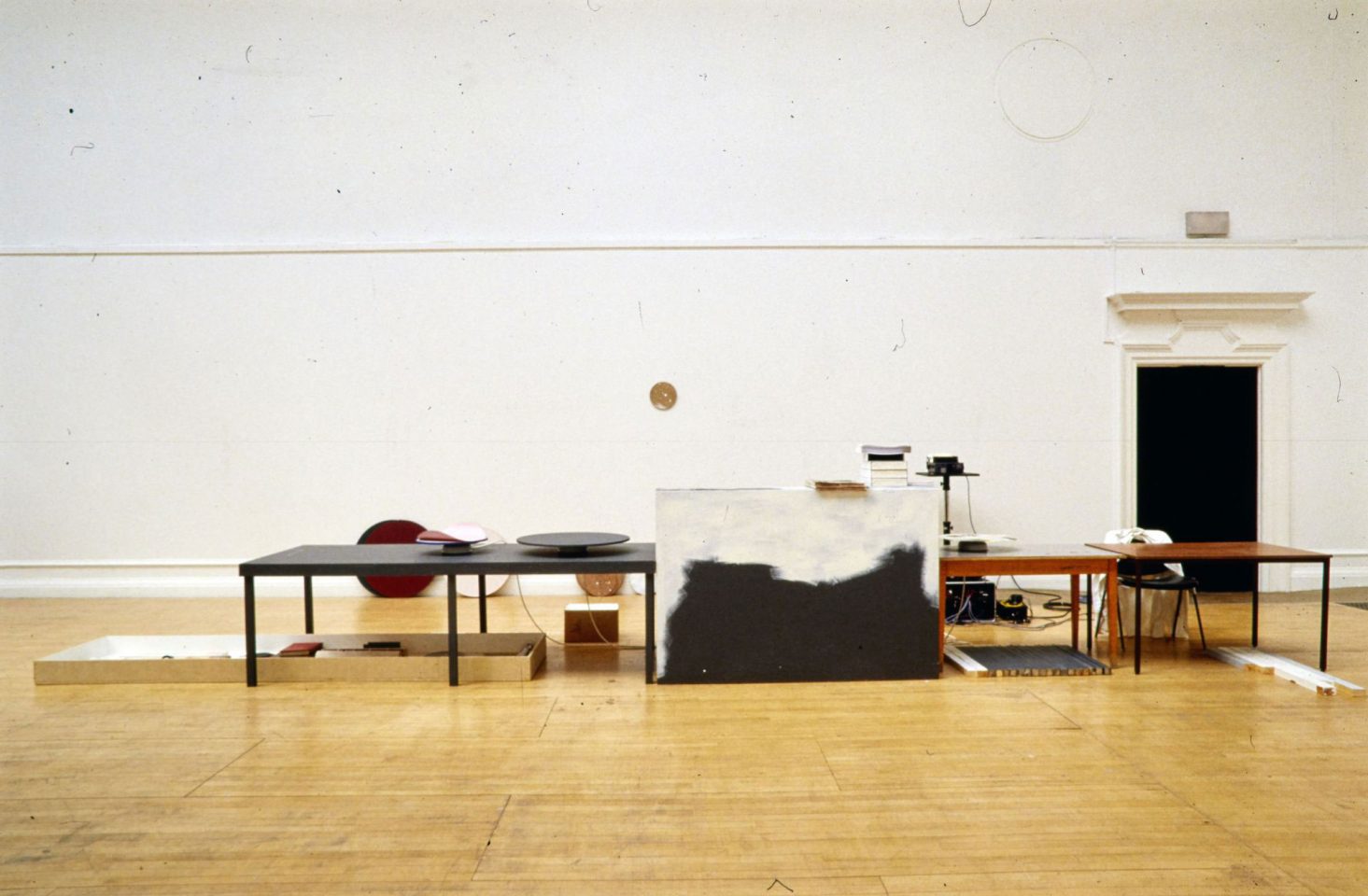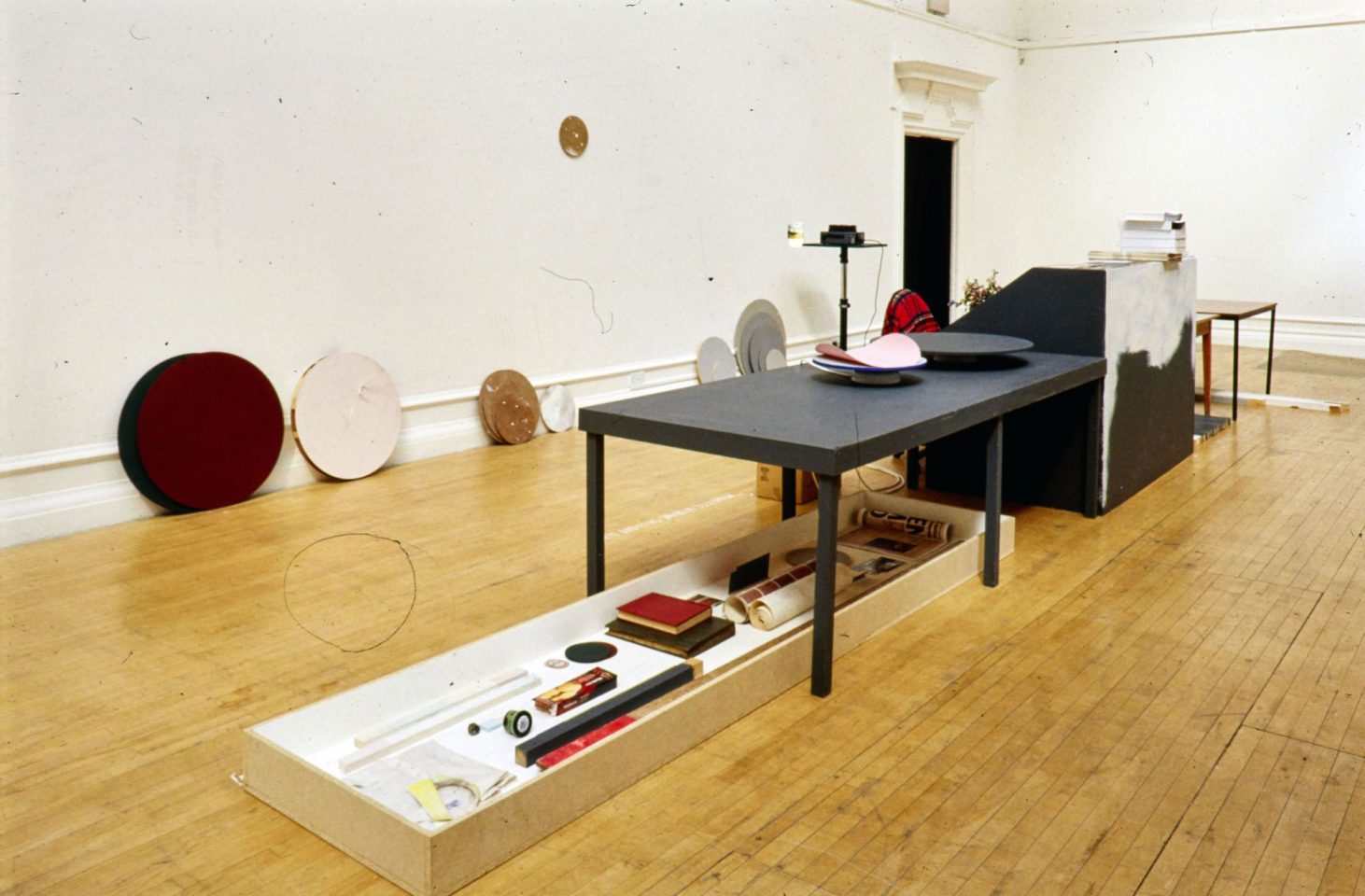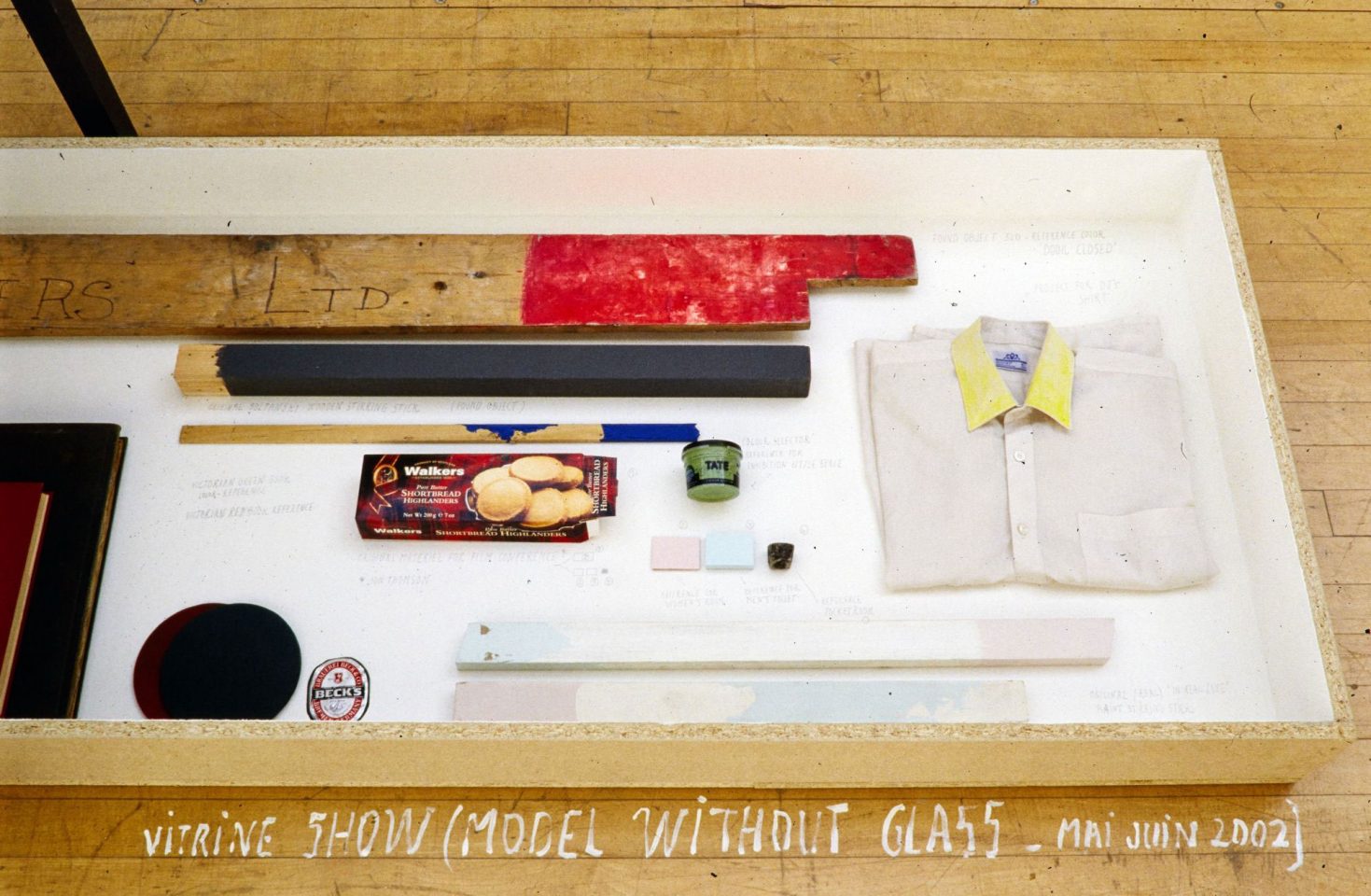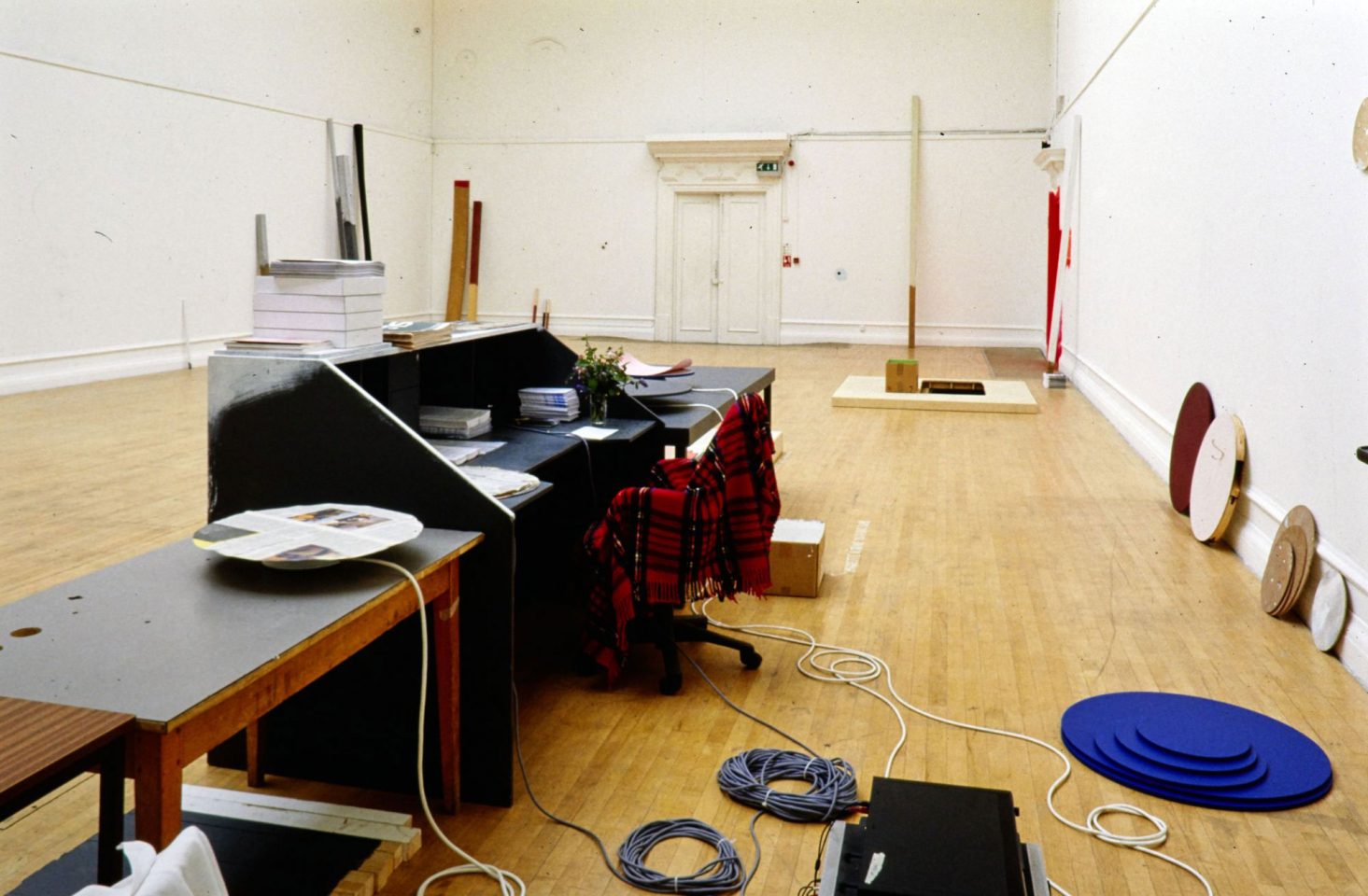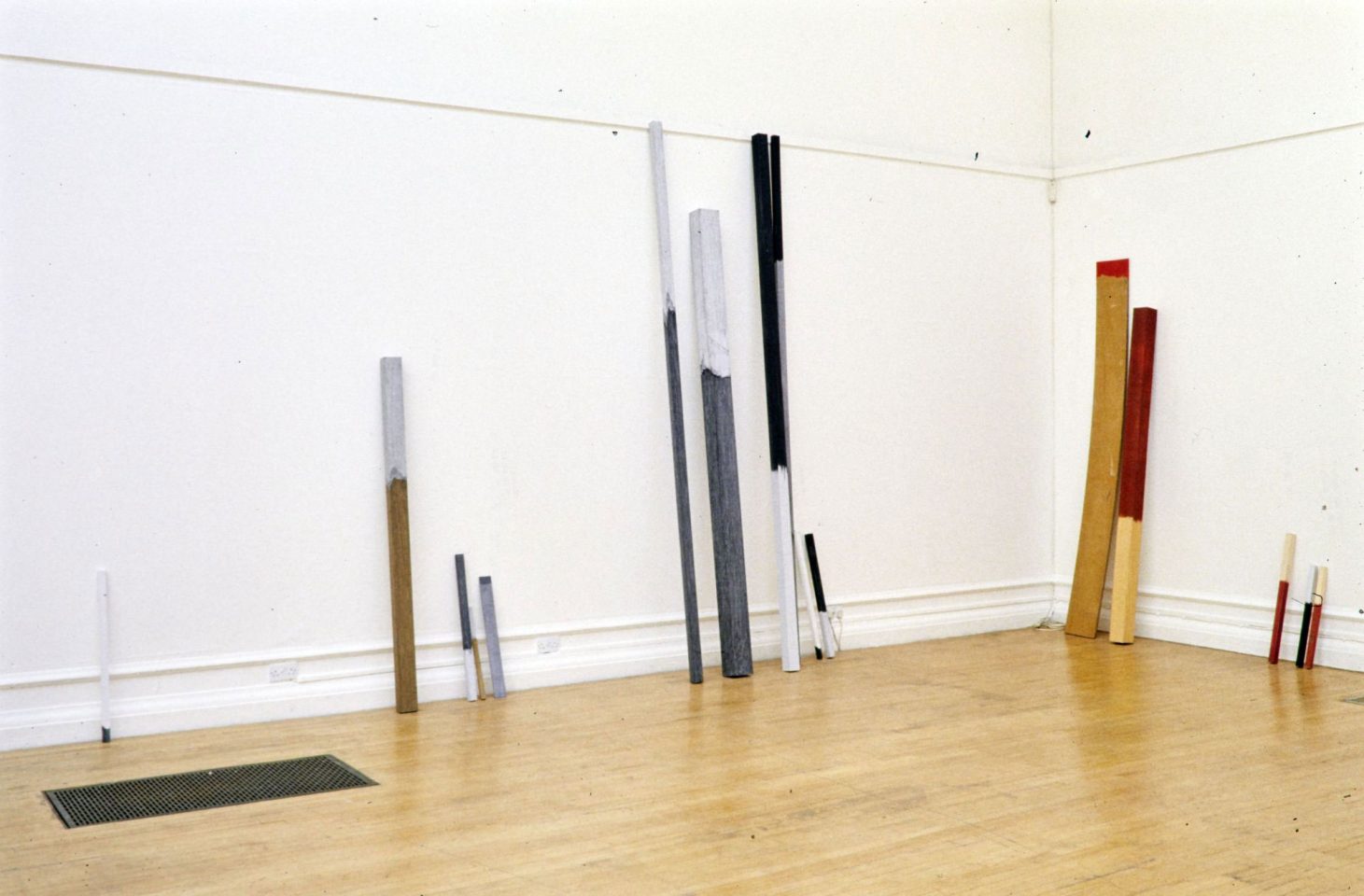
Installation view of Joelle Tuerlinckx's 2002 exhibition In Real Time: Space Parts, Solar Room, Night Cabin .
Only on very rare occasions does one meet an artist with a truly unique and original voice. Joëlle Tuerlinckx is such an artist. For more than twenty years she has been developing her own language, re-interpreting the world around her, making others see it with fresh eyes. For her solo exhibition at the South London Gallery (SLG), In Real Time: Space Parts, Solar Room, Night Cabin, Tuerlinckx has interpreted the space in relation to its primary function as a paintings gallery when it was opened in 1891. However, it is the absence of any ‘real’ paintings in the space that pervades the exhibition.
Sculptures, drawings and films are made from the sparest of means which at first suggest a simplicity belying the many levels on which they can be read. We are made to look twice at what appear to be everyday objects and instances but which on closer inspection are never quite what they at first seemed. The relationship between the real and the artificial is central throughout as the artist persistently pushes us to question the authenticity of what we see and experience.
It is difficult to describe the work of Joëlle Tuerlinckx, who is one of the most established artists in her native Belgium with a growing international reputation, but relatively little known in the UK. The work is site specific to the degree that it has to be experienced to be fully comprehended, yet it does not sit easily within the category of ‘installation art’. Tuerlinckx finds her space, interprets it for us, teases out abstract notions and thoughts and gently makes us look at it again, see it differently and feel it differently. What she does is ephemeral, yet insistent. Her ideas get under one’s skin, into one’s head.
The concept of ‘stretching’ space is central to Tuerlinckx’s work, as it was in A Stretch Museum Scale 1:1, which she created for her major solo show at the Bonnefantenmuseum in Maastricht last year. But what does it mean to ‘stretch’ a museum? For Tuerlinckx it’s about expanding the arena in which she works, thereby expanding it for the visitors to the show. When you walk into a gallery space you have an instant grasp of the basic layout, of your position in relation to the doors, windows and walls. You have a sense of the volume of a space, of how it would sound were you to speak or whistle in it. If you walk into a room from broad sunlight outside, you expect the light coming through the windows to look a certain way, to cast certain shadows. Tuerlinckx takes all these sureties and with the most delicate of touches manipulates them completely.
Time, and our understanding of it, is also crucially important. There were no exhibits in Tuerlinckx’s Dacht en Nacht.MUSEUM OPEN 24/24 project of 1997 when she opened the Provinciaal Museum in Hasselt for 24 hours a day. The lighting system was manipulated so that visitors to the museum arriving at midnight might experience the galleries flooded in intense sunlight, or those arriving in the middle of the day might wander the spaces in ghostly half-light. The cleverness of this work is not so much the experience within the actual gallery spaces but the way one feels on leaving this fake reality. On leaving the bright spaces and returning to the real night-time the darkness seems blacker, the silence more intense. In other words, Tuerlinckx shifts and heightens our sense of the world, what we expect it to be and our position within it.
One of the most remarkable qualities of Tuerlinckx’s approach is that whatever form an individual work may take, it invariably enriches and enhances her artistic output as a whole. The impact and significance of this interplay between the different aspects of her work is only fully revealed by seeing one of her exhibitions for oneself.
